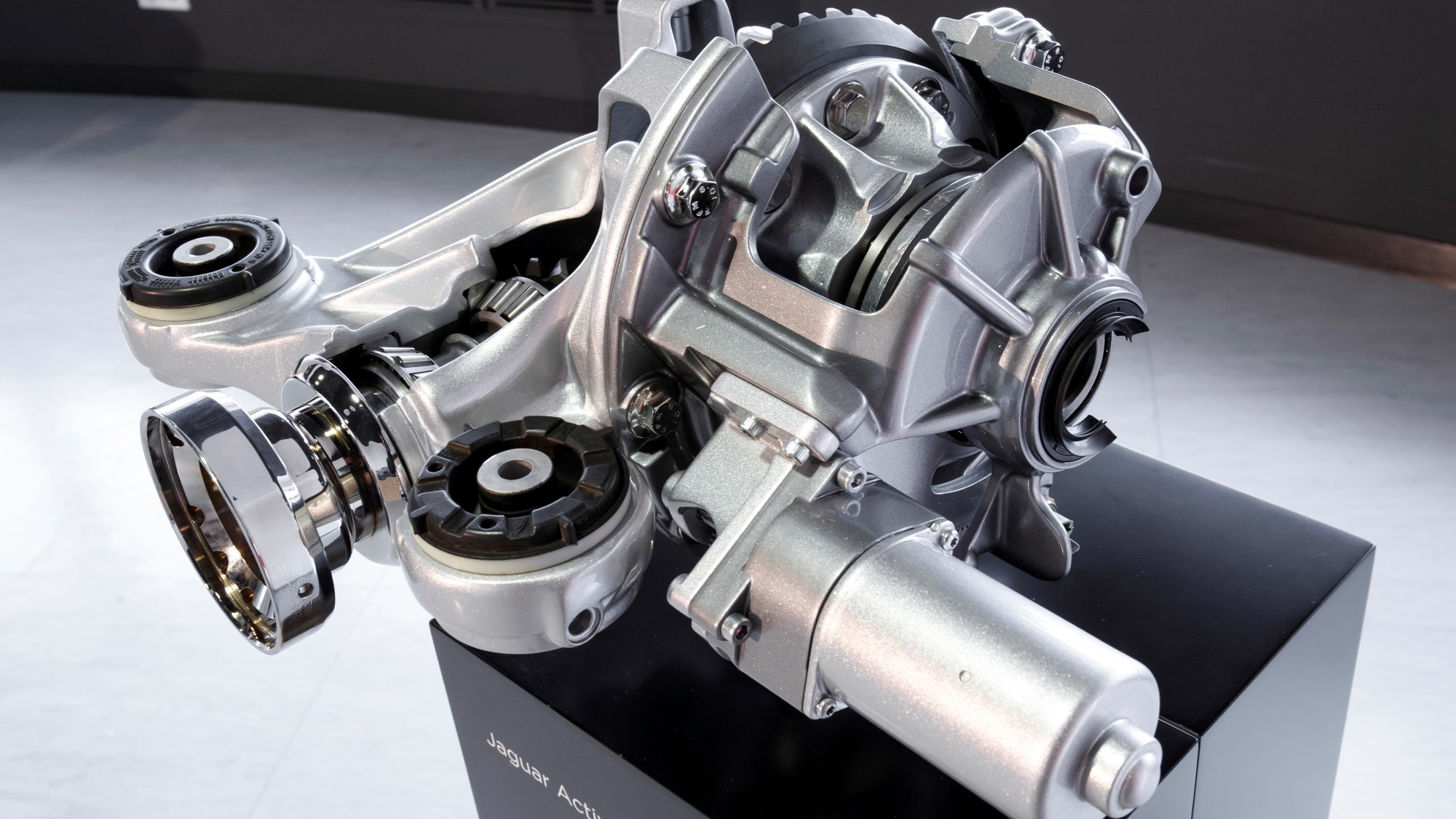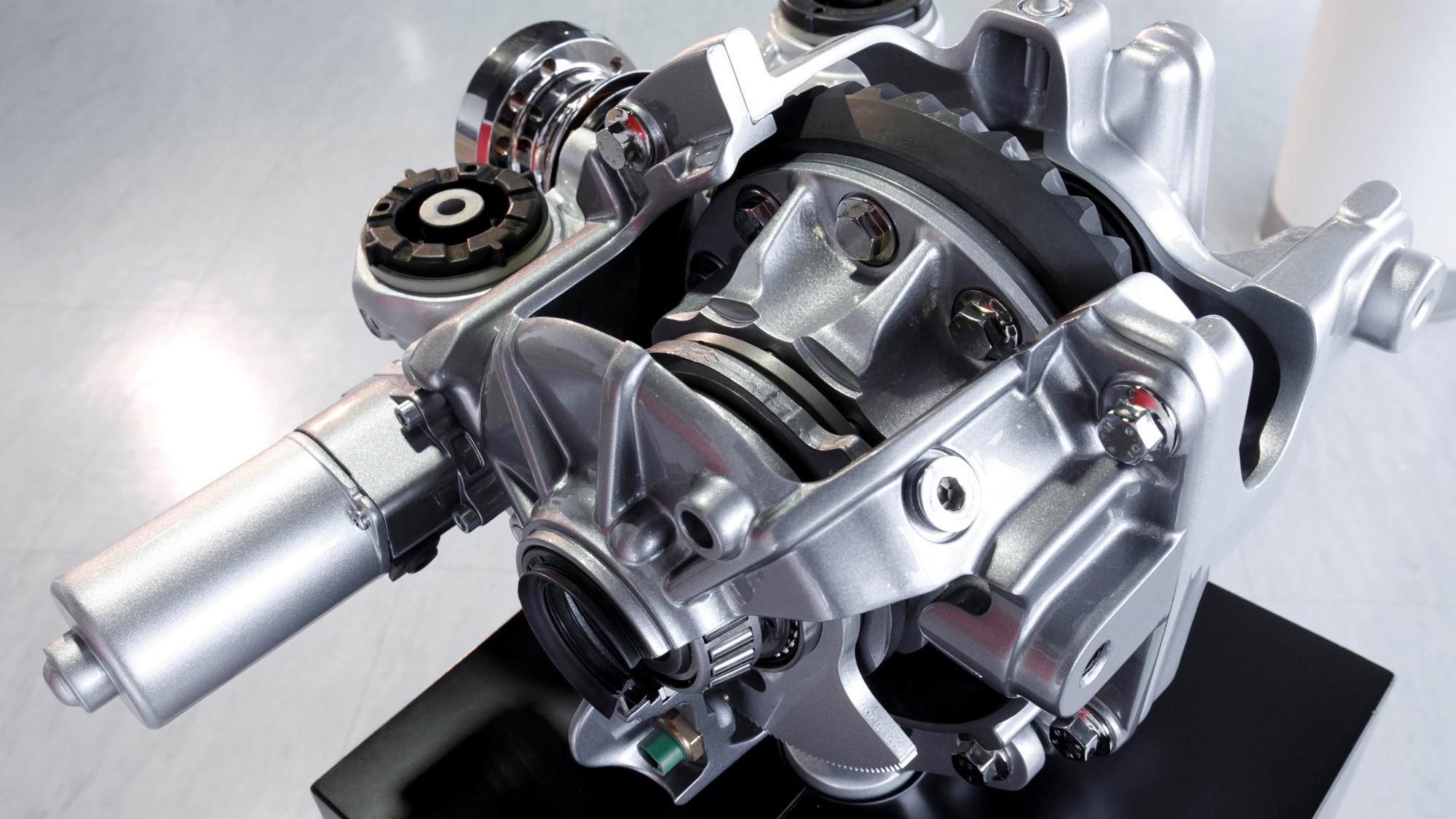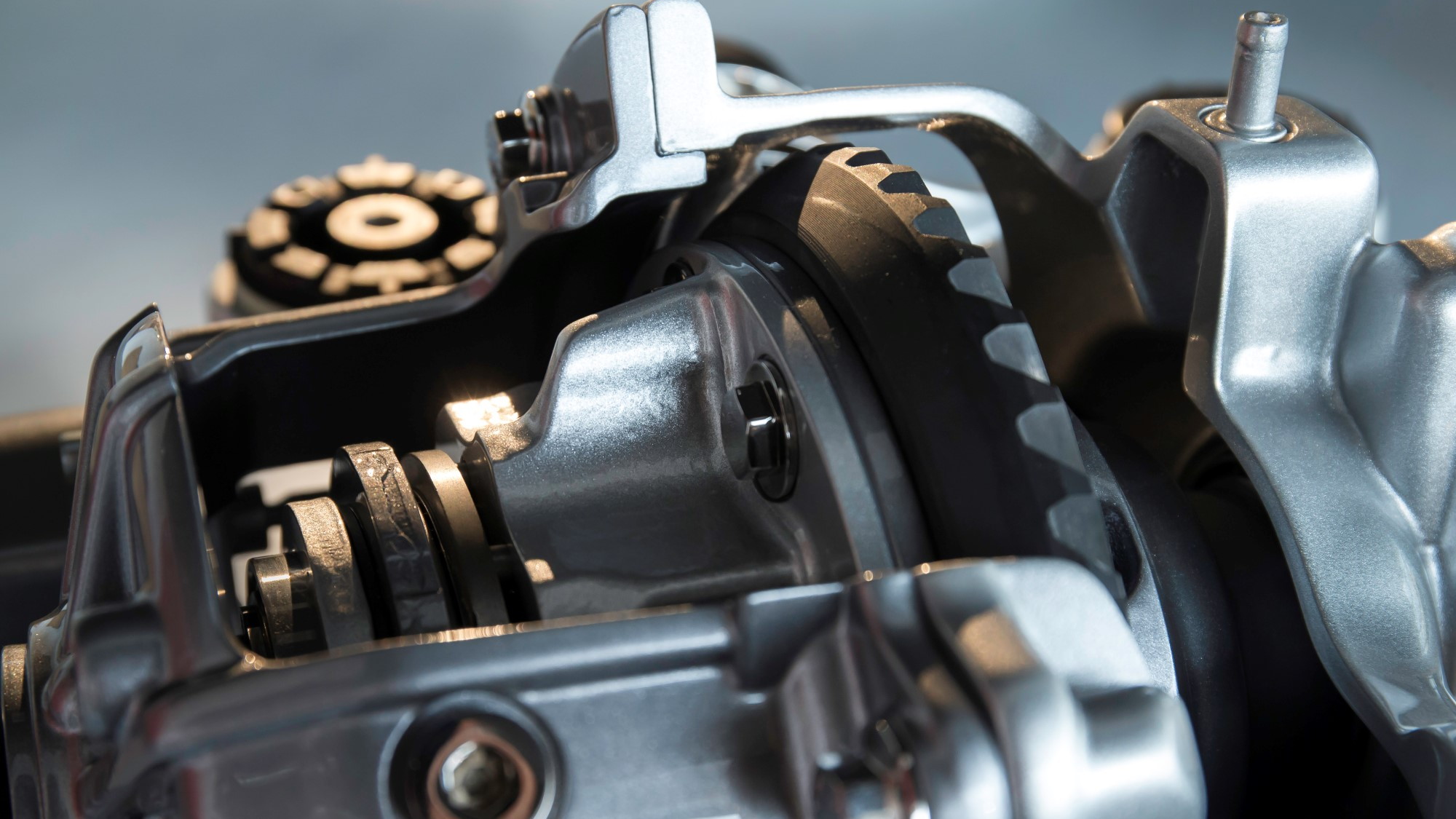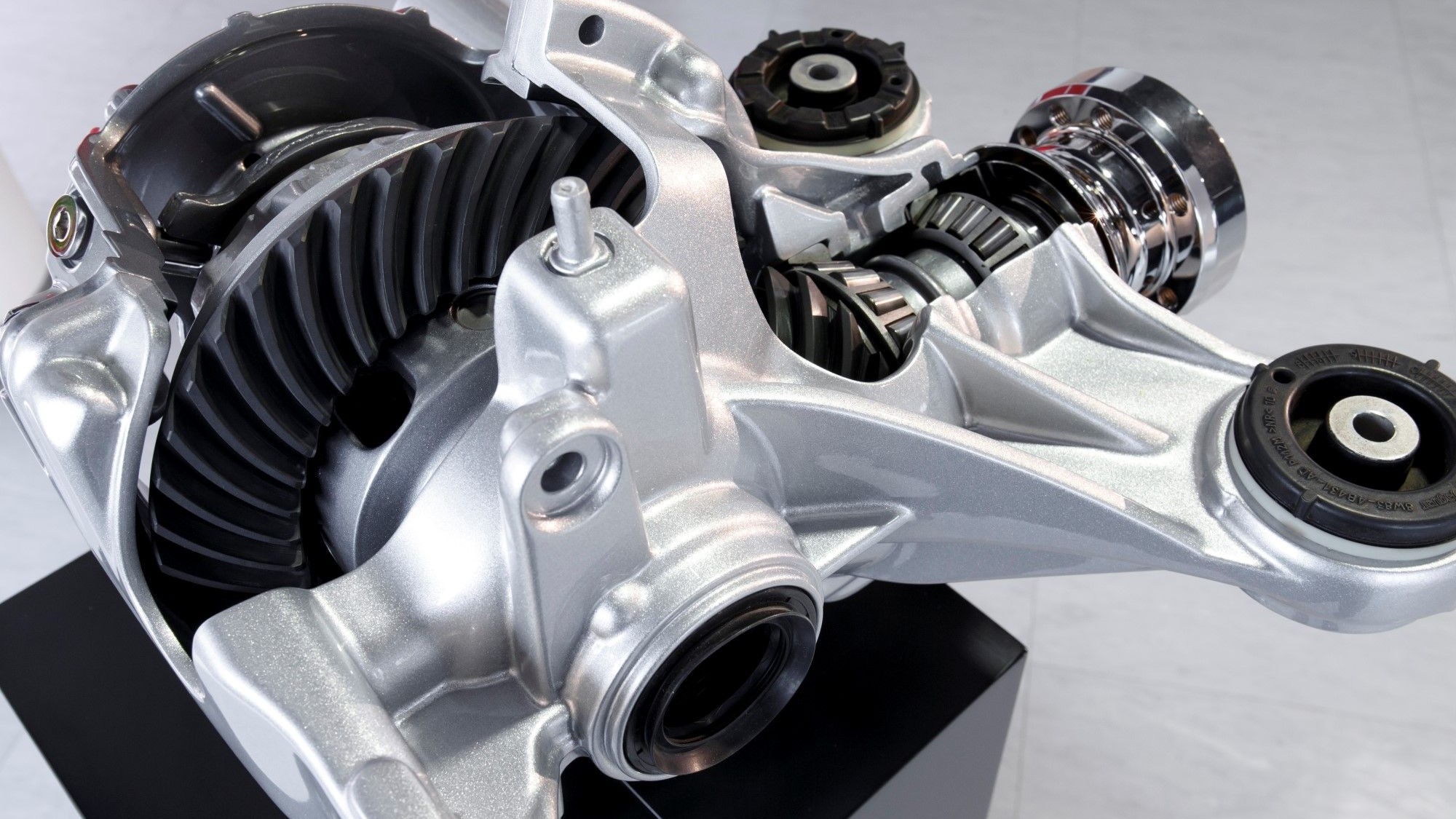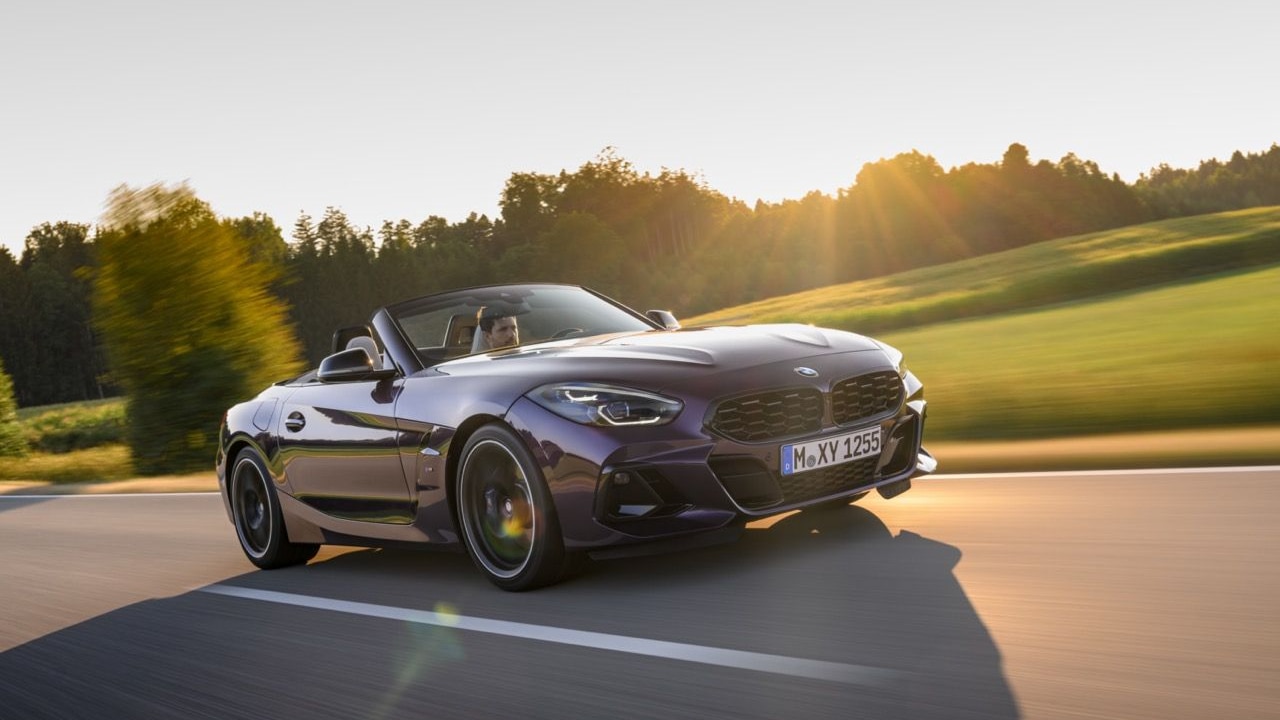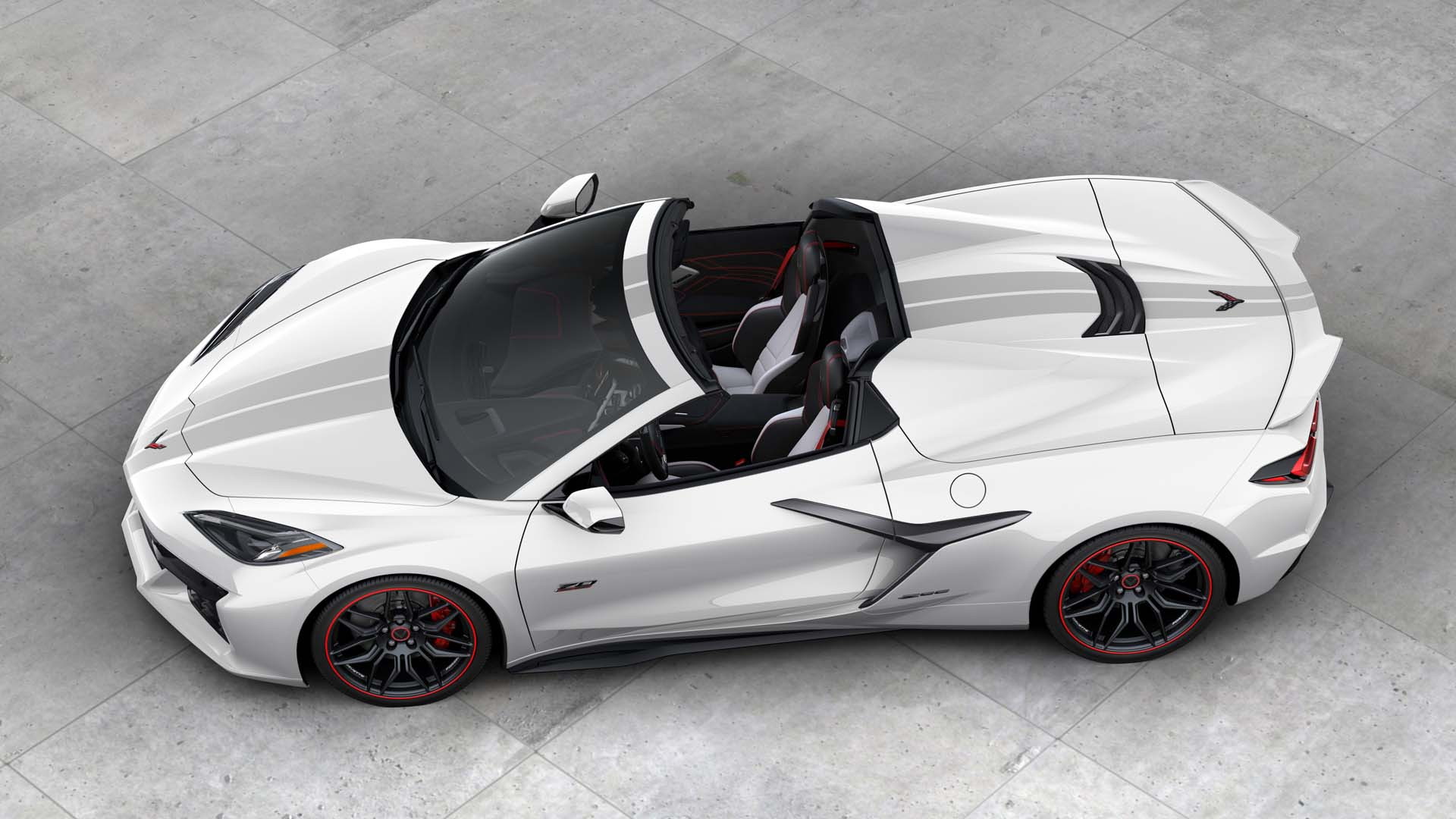Huge rear tires, especially on F-Type V8 S models, also help with the mechanical aspects of grip delivery, of course. But even the biggest of tires lose traction at some level of torque--ask any Viper owner.
So, to enhance the value of the available grip at the contact patch, Jaguar's engineers spent considerable effort ensuring the F-Type would use its traction smartly, enabling easy and drama-free application of power. They succeeded to great effect.
The first stop on this tour of F-Type power application is the differential. A typical, open differential will relay engine power to the rear wheels, but should either tire slip, all of the engine's torque will be applied to that wheel--rather than the one that's gripping. The result is a sight and sound familiar to all track addicts, autocrossers, and general hoons: inside wheelspin, or, in the straight-line version, the one-wheel peel.
Limited slip differentials remedy that problem by using some internal mechanism to tie both rear wheels together in their forward rotation, either using gears to bias torque or clutch plates to limit (or completely prevent) any differential in speed between the two rear wheels.
The F-Type uses a limited-slip differential in all applications. In the base F-Type, it's a pure mechanical solution, and it's very effective.
In the F-Type V8 S, Jaguar adds another wrinkle: electronic actuation and control of the limited-slip properties of the differential. An electric motor mounted to the differential acts on a multi-plate clutch assembly within to send torque to the wheel with the most grip. Automatically engaged by the on-board computer, the sysem can vary the amount of lockup and can switch to full lockup (ideal for straight line acceleration) almost instantaneously.
The data fed to the computer controlling the differential includes ABS, stability, and traction control information for details on wheel speed (and slip) yaw rates, and more.
On the fully electronic side of things, there's Dynamic Launch Mode, available only on the F-Type S. By simply pressing the brake pedal while stopped, the system engages, reading "Dynamic Launch Mode Ready" in the instrument panel. Release the brake while flooring the throttle, and the computer manages wheel slip and gear shifts to make for the best launch possible--or very nearly so.
There's also a function of the eight-speed Quickshift automatic transmission that helps in corner-exit acceleration: Corner Recognition. Using on-board sensors to know when the car is in a corner, the system holds the selected gear ratio through the turn, enabling the driver to choose the correct gear for the best exit. If you've ever driven a sporty automatic-equipped car that decided to upshift just as you were about to put the pedal down--only to downshift again abruptly, unsettling the car--you can appreciate the value of the F-Type's Corner Recognition.
Of course, there's more the story, as with any complex system like a modern sports car--chassis stiffness, suspension design, and many other factors play a role in the F-Type's ability to put down the power from its trio of supercharged engines. Fortunately, we have you covered with our 30 Days of the 2014 Jaguar F-Type series.
-----------
Catch up on all of our 30 Days of the 2014 Jaguar F-Type coverage here.
Read our first drive review of the all three versions of the 2014 F-Type here.
Check out the full details on the F-Type range with The Car Connection's full review here.
30 Days of the 2014 Jaguar F-Type
